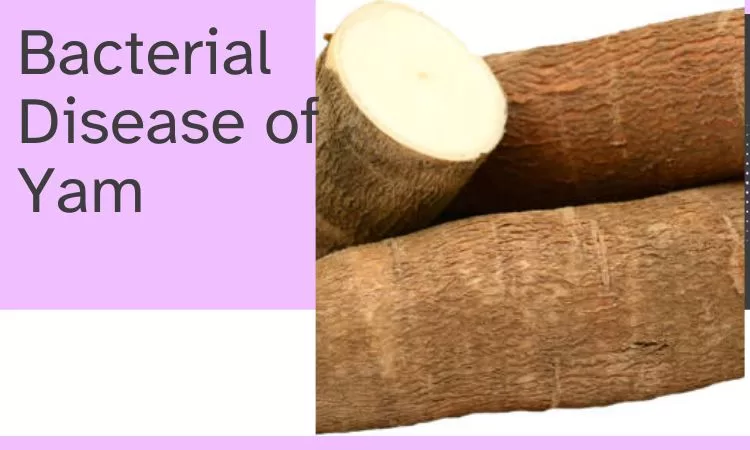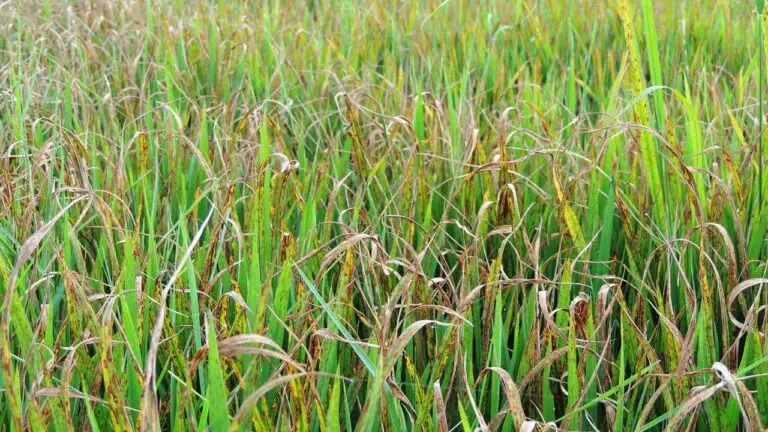Bacterial Disease of Yam
Yam, a starchy tuber crop, is a staple crop for millions of people in Africa, Asia, and Latin America. It is an excellent source of minerals, vitamins, and carbs. However, a variety of illnesses, including bacterial infections, can affect yams so its important to know the bacterial disease of yam
However, yam bacterial infections can result in significant financial losses. They may even cause a crop to fail in specific circumstances. It’s critical to understand the many bacterial yam infections so that you can take precautions against and manage them.
In this blog post, we shall unveil the bacterial diseases of yams and the control and prevention of the diseases of yams. Don’t stop scrolling through to see answers to your questions.
To cut the long case, below are the five (5) common bacterial diseases of Yam.
- Bacterial Wilt (Xanthomonas campestris)
- Soft Rot (Erwinia carotovora)
- Bacterial Leaf Blight (Xanthomonas axonopodis)
- Bacterial Soft Rot (Dickeya spp)
1. Bacterial Wilt (Xanthomonas campestris)

Bacterial Wilt is a destructive disease in yam plants caused by the bacterium Xanthomonas campestris. It primarily affects the vascular system, leading to wilting and death of the plant as it has no cure.
The symptoms include the sudden wilting of leaves, starting from the lower part of the plant. Yellowing of leaves, with a noticeable water-soaked appearance. Slimy ooze when infected stems are cut.
To Control bacterial wilt in your barn, you must rotate yam crops with non-host plants. Remove and destroy infected plants promptly. Apply Copper-based fungicide, especially during the early stages. Copper-based fungicide can only suppress it for a little period of time.
To prevent the disease, use disease-free planting material. Practice good sanitation in the field to reduce bacterial presence. Choose yam varieties resistant to bacterial wilt when available.
2. Soft Rot (Erwinia carotovora)
Soft Rot is a bacterial disease caused by Erwinia carotovora, leading to the rapid decay of yam tubers. It is always easy to spot a yam that is suffering from soft rot. Water-soaked lesions on the yam tubers. Foul-smelling, slimy rotting of the infected tubers. Soft, mushy texture with a distinctly unpleasant odor.
To control soft rot in yam, you must properly cure yam tubers before storage. Store yams in well-ventilated, cool, and dry conditions. Also, ensure equipment and tools are clean to avoid bacterial transfer.
To prevent the disease, you should Harvest yams when they mature to reduce susceptibility. Avoid injuring tubers during harvest and post-harvest handling. Use disease-free seed yams for planting.
3. Bacterial Leaf Blight (Xanthomonas axonopodis)

Bacterial Leaf Blight is a detrimental bacterial disease afflicting yam plants, primarily caused by Xanthomonas axonopodis. The disease manifests through water-soaked lesions on yam leaves, surrounded by a distinct yellow halo. Dark streaks on leaf veins contribute to the blighted appearance of the foliage.
To control bacterial leaves, mitigate the spread by employing copper-based sprays, which act as effective bactericides. Sanitation practices, including the prompt removal and destruction of infected plant material, play a crucial role. Opting for yam varieties resistant to Xanthomonas axonopodis further aids in reducing disease incidence.
To prevent the disease from harming the yams, implement crop rotation to disrupt the disease cycle. Avoid overhead irrigation to minimize leaf wetness, and vigilant monitoring for early symptom detection.
4. Bacterial Soft Rot (Dickeya spp)
Bacterial Soft Rot, attributed to Dickeya spp., is a destructive yam disease characterized by the decay of plant tissues. This malady manifests through soft, watery, and foul-smelling decay in yam tubers. Infected areas often exhibit a dark, slimy appearance, and the affected tissue may experience rapid collapse.
To control it, ensure proper storage conditions, with an emphasis on appropriate curing practices. Minimizing physical damage to yam tubers during handling is crucial to prevent potential entry points for Dickeya spp. Incorporating crop rotation strategies can contribute to disease management.
Bacterial soft rot can be prevented. Preventive measures encompass using disease-free planting material, implementing stringent quarantine measures to avert the introduction of infected yam material, and ongoing monitoring with the swift removal of any identified infected plants.
5. Bacterial Black Rot (Pectobacterium carotovorum)
Bacterial Black Rot is a destructive bacterial disease affecting yam plants, caused by the bacterium Pectobacterium carotovorum. This pathogen primarily targets yams and can lead to significant crop losses.
The symptoms are dark, water-soaked lesions on the leaves of the yam, starting from the margins. The Blackened and decayed areas on stems are often accompanied by a foul odor. Rotting of yam tubers with a characteristic foul smell. The Affected plants exhibit wilting and general decline.
To control it you must rotate crops to reduce bacterial populations in the soil.
Also, remove and destroy infected plant material to prevent the spread of the disease. Plant yam varieties show resistance to bacterial black rot and avoid overwatering, as excessive moisture creates favorable conditions for bacterial growth.
To prevent bacterial black rot, isolate infected plants to prevent the disease from spreading to healthy yams. Try to treat yam seeds with appropriate bactericides before planting to reduce the risk of infection. Also, inspect yam plants regularly for early signs of bacterial black rot and take prompt action if detected.
What are the Harmful Bacterials for Yam?
Harmful bacteria are mischievous troublemakers for yams, causing issues that can spoil the crop. They are grouped into two: Pectobacterium and Dickeya. They team up to create a problem called soft rot in yams, turning them all mushy and ruining their freshness. It’s like a soggy surprise that no one wants!
Now, there’s another sneaky character called Xanthomonas campestris pv. phaseoli. This one brings a threat known as bacterial blight to yams. Imagine it as tiny leaf villains causing spots on the leaves, making the yam plants sick. When plants are sick, they can’t produce good tubers, and that’s bad news for farmers.
To keep these bacteria at bay, farmers need to be like superhero guardians for their yams. They should make sure the yams aren’t sitting in too much water, sort of like how we don’t like wet socks. Also, when harvesting and storing yams, keep your barn clean.
Choosing yam varieties that are resistant to these bacterial bullies is like giving the yams their bodyguards. These superhero yams can withstand the attacks better, ensuring a healthy and tasty harvest. So, by being vigilant and taking these steps, farmers can protect their yams from the bacteria villains and have a successful harvest!
wrap up
The bacterial diseases affecting yams pose a significant threat to agricultural productivity and food security. Effective management strategies, including disease-resistant varieties, proper sanitation, and integrated pest management, are crucial for mitigating these challenges.
In this article, we have written out some bacterial diseases on yam that you should be aware of if you are a farmer. We also added how to control and prevent them.
According to research, there is no better treatment for any infected yam. So, beware of these diseases and protect your yam from being infected.





